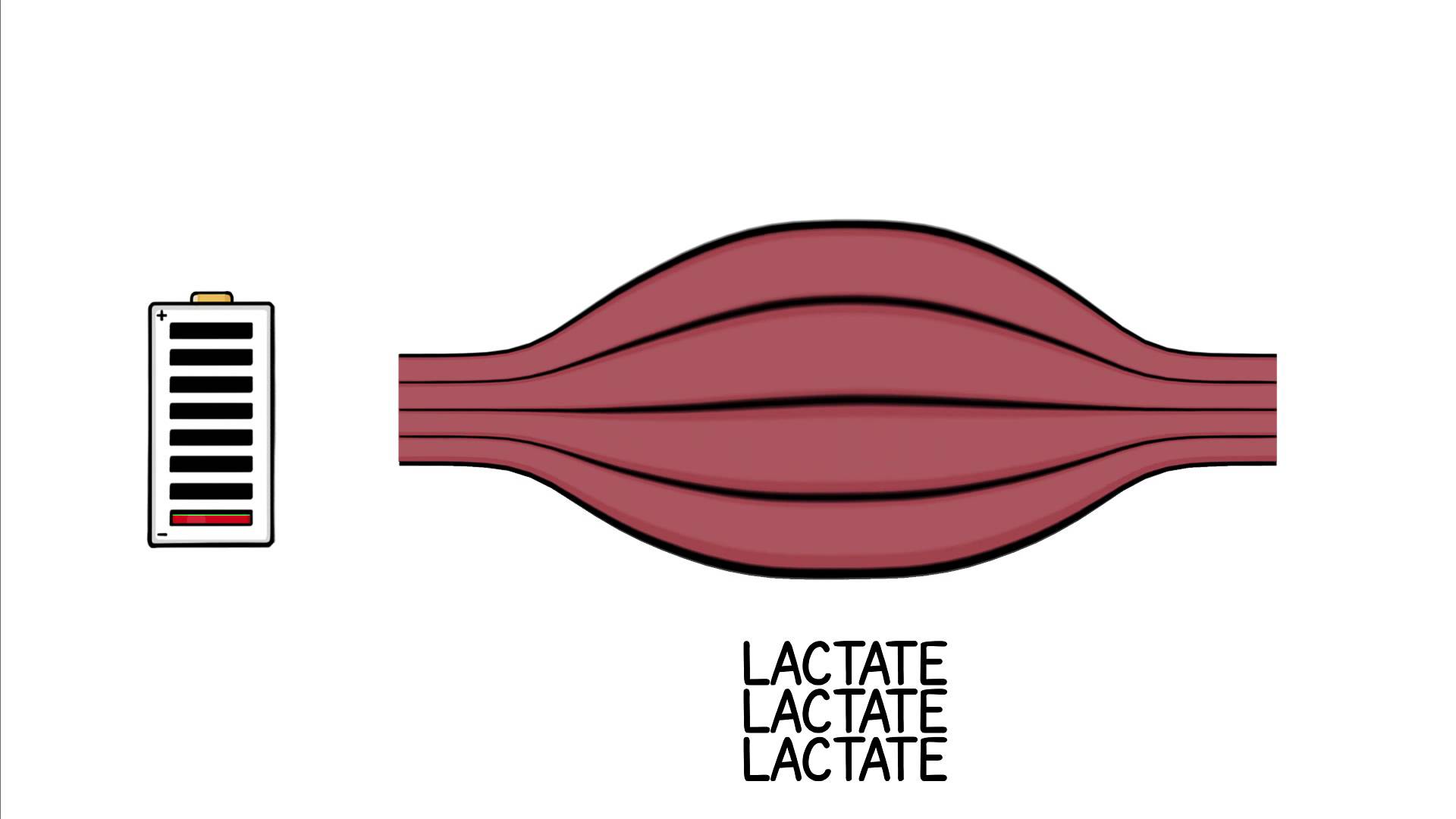Temporary muscle soreness resulting from chemical shifts during intense workouts is a small price to pay for acquiring a fit physique.
No Pain, No Gain?

Fitness expert Shannon Clark points out that trainees shouldn’t erroneously equate progress with sore muscles after a workout.
A great point considering all the variations of training and how different individuals respond to workouts. A tough exercise session for one person is nothing more than a warm-up for another.
Therefore, soreness after training doesn’t necessarily equal progress nor lack thereof.
Nevertheless, trainees desiring serious fitness-related improvements will occasionally experience muscle soreness, which isn’t a bad thing.
If the soreness rapidly dissipates it’s probably acute muscle soreness.
If the pain is not immediately experienced, but instead creeps up about 12 to 48 hours after intense exercise, delayed-onset muscle soreness (DOMS) may be the culprit.
Either way experiencing muscle discomfort while exercising is an inevitably part of making steady progress.
Muscle Fatigue And Chemicals Processes

Muscle soreness or fatigue should be temporary if caused by elevated concentrations of lactic acid, which a weak acid and waste product of intense repeat-interval exercise lasting more than 10 – 15 seconds.
For example, curling a barbell with poundage heavy enough to allow for 10 – 12 controlled repetitions would create lactate-based muscle soreness in many trainees.
Increased acidity from lactic acid buildup (hydrogen ions) is often responsible for the immediate training discomfort in active muscles tissue.
But more data is needed before scientists agree on the physiology of muscle soreness/fatigue.
Competing studies on muscle soreness/fatigue from Westerblad et. al., News in Physiological Sciences, propose that reduced pH may not be the key factor in muscle soreness/fatigue, instead, inorganic phosphate could be a major contributor.
However, regardless of the actual precursors causing fatigue/soreness, exercise performed at levels exceeding oxidative metabolism cause hard-working muscles to develop metabolites that produce sensations of soreness and/or fatigue.
Recommended: Blackwolf workout 10X enhancer supplement for energy production
Pathways Leading To Burning Muscles

Receptors in blood vessels and brain centers recognize elevated concentrations of wastes like CO2, lactic acid, hydrogen ions and heat in the blood which in turn signal the autonomic nervous system to increase heart rate, stroke volume, ventilation, blood redistribution and related cardio-respiratory functions that assist fatigued muscles.
This is why some exercisers might breath deeply, pant or sweat during intense exercise like running uphill or a hard set of parallel squats.
The body is attempting to re-establish balance by reducing concentrations of waste generated by muscles resulting from intense training.
Physical changes like heavy breathing are simply the body’s attempt to deliver enough oxygen and related substrates to produce the energy required to maintain exercise pace.
However, exercises that exceed the rate of energy production via oxidative metabolism outpaces the body’s efforts to deliver energy-producing substrates like oxygen and sugar while removing wastes.
Thus, limiting factors to sustaining exercise intensity becomes waste removal and nutrient delivery to fatigued muscles.
Eventually, exercise stops until fatigued muscles recover. This sequence of events generally occurs as trainees exercise at increasingly high levels of intensity.
Please note there is always some lactic acid produced in the muscles even during low-intensity exercise and rest, which is when oxidative metabolism is the primary source of energy.
If lactic acid is produced while resting, why is there no sensation of muscle soreness/fatigue similar to that when working out intensely?
The key distinction between muscle discomfort during intense training and rest is lactate wastes produced at lower intensities are removed at rates equal to its manufacture.
In other words, the body is able to sustain energy balance while negating interruptions of rest periods.
There are no sensations of muscle soreness and that’s why most people choose rest to alleviate muscle soreness and fatigue.
In The Gym With Sour Bodies
To defend against ongoing cellular destruction during intense training, the body has mechanisms (buffering agents) that remove excess metabolic wastes.
Lactic acid components leaked from muscle cells during exercise create an acidic environment.
To counter, blood plasma brings buffering anions commonly called bicarbonates that react with surrounding protons (hydrogen ions donated from lactate) to make carbon dioxide and water.
Carbon dioxide is then quickly expelled through the lungs.
Therefore, heavy breathing is no cause for alarm under strenuous exercise conditions unless there is an underlying health problem.
Increased breathing expels wastes like carbon dioxide and raises blood pH thereby reducing a potentially hazardous acidic environment near muscle cells.
On the other hand, lactic acid isn’t necessarily a bad thing although it might seem otherwise as it contributes to acidic conditions, muscle fatigue and soreness during exercise.
But, vital body tissues like liver, heart and kidneys have the capability to uptake lactic acid and process it into substrates for energy production making it a useful resource for overall body functioning.
Next time exercise leaves you fatigued, hot, bothered or breathing heavy don’t fret! With common sense and a focus on safe techniques, occasionally boosting training intensity need not be avoided.
Intensity does a body good and offers an extra bonus—great results in less time. You can’t train long if you train hard.
